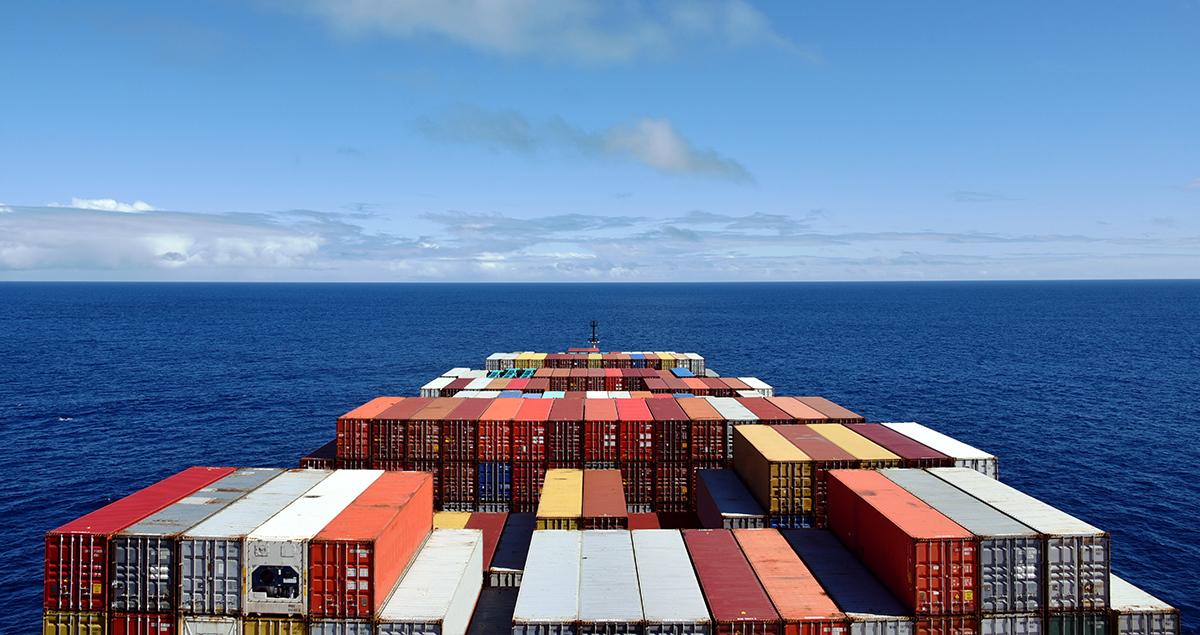Sailing towards a low-emissions future

A large container ship can’t quickly change direction and neither can the shipping industry. But as maritime shipping faces pressure to reduce, and eventually eliminate, harmful emissions, the industry needs to accelerate this stubbornly slow transition.
At the recent Annual Meeting of the World Economic Forum in Davos, Isabella Lövin, the Deputy Prime Minister of Sweden, described the public and private sectors’ push for a “new kind of urgency” on climate change. “We need to move to real action,” Lövin declared during a panel on the decarbonization of shipping.
Running on heavy fuel oil, maritime carriers have long been prolific polluters, making them an obvious target for improvement. From January 1st, 2020, shippers have faced tighter restrictions on sulfur oxide (SOx) and nitrogen oxide (NOx) emissions. This is the latest step in the International Maritime Organization’s (IMO) ultimate goal of an environmental makeover: it wants the industry to reduce CO₂ emissions to half of 2008 levels by 2050.
Currently, maritime ships account for about 2% of all greenhouse gas emissions worldwide. And emissions could actually worsen as the global economy grows, increasing by between 50 to 250% over the next 30 years, according to IMO estimates.
Finding solutions to meet both the IMO’s ambitious 2050 target and its new SOx and NOx rules, requires investment in a broad range of fuel options, new infrastructure, and new technologies, alongside government policies that create economic incentives to transform the industry.
The ripple effect of a fuel change
One quick fix to limit SOx and NOx emissions is simply switching to low-sulfur fuel oil. But there’s a trade-off, as low-sulfur fuel costs around $200 per metric ton more than high-sulfur fuels. For large container ships that use around 60,000 metric tons of fuel a year to crisscross the globe, the switch could add $12 million or so to current operating costs. However, these calculations were made prior to the worldwide collapse in oil demand in the wake of the COVID-19 pandemic, and the resulting record falls in oil prices.
While the long-term outlook for fuel prices is still uncertain, if tens of thousands of the world’s vessels did switch, the demand on global supplies of lower-sulfur fuels would likely produce a domino-effect throughout the global economy. It would force a tightening of supply across all transportation modes and push up the price, leaving both shippers and consumers to meet the cost.
If you want cleaner fuel, clean it yourself
There are concerns that a spike in demand could leave higher specification marine fuels in short supply. Some ship owners are already turning to technology that cleans bunker fuel, by retrofitting their vessels with marine scrubbers.
Once fitted, scrubbers draw seawater from underneath the vessel as it sails. The water is sprayed at the ship’s exhaust gases to remove sulfur particles before they reach the atmosphere and is then discharged into the sea. As seawater is alkaline, it removes the acid element without the need for expensive chemicals.
According to energy consultancy Wood Mackenzie, some 2,000 large vessels have placed orders for scrubbers, which allow shippers to use low-cost bunker fuel and recoup their cost in two or three years.
Slowing down to speed up emissions reductions
More efficient marine vessels reduce emissions as well. Under the IMO's energy-efficiency regulations, new ships will need to achieve a new standard — boosting energy efficiency by 30% — by 2025, compared to vessels built in 2014. Existing ships must have an energy efficiency management plan, which improves the operation through voyage planning, cleaning the propeller and the vessel’s underside, and introducing beneficial technology such as waste heat recovery systems. But these measures form a small part of the solution.
One decidedly low-tech solution is to simply slow down. As a recent GL Reynolds study illustrates, steaming at a reduced speed burns less fuel and cuts emissions: large ships traveling 20% slower reduced carbon emissions by 24%. But in rough seas, tankers and container ships need to maintain a reasonable steaming speed to stay out of danger.
If a slower pace hurts delivery volume, shipowners could put more vessels on the water to maintain a fleet’s current and future trading capacity.
Fast-tracking hydrogen
Switching to LNG – which has near-zero sulfur emissions, and lower NOx and CO2 emissions – is an attractive path to meeting the IMO’s 2050 goal, given that the price is expected to drop as new supply comes online in the coming years. Likewise, other alternatives such as biodiesels or liquefied biogas could help reduce emissions. But there’s a catch with these fuels. They don’t eliminate emissions and lack the necessary infrastructure at ports.
To decarbonize, the industry needs to fast-track the development and economics of carbon-free options, such as hydrogen. When produced from renewable sources, hydrogen is clean, but supplying enough for the industry requires altogether new infrastructure, from refineries to fueling equipment. And the ships themselves would need to be retrofitted, with a hydrogen fuel cell and enough storage to carry liquefied hydrogen safely.
The cost of hydrogen needs to be competitive with fossil fuel prices. According to Marco Alvera, CEO of Snam, Europe’s largest natural gas utility, the game-changer will be mass production of electrolyzers, the machines used to create hydrogen using electricity. Right now, as Alvera described at Davos during the decarbonization panel, the equipment is made by hand. If production could be industrialized and economies of scale leveraged, more hydrogen could be produced for significantly less, removing a major hurdle to widespread adoption.
Another carbon-free option showing promise is ammonia. Development is underway to create an ammonia-fueled engine and assess how best to store the chemical, which weighs twice as much as marine fuel oil and takes up far more space.

An electric boost
As experiments with battery-powered smaller vessels demonstrate, electrification could eventually offer a route to zero emissions. Following the successful introduction in Norway a few years ago of an all-electric ferry using a 1 MWh battery, Denmark soon followed suit. Today, there are more than 100 electric ferries in use worldwide, typically fast charging at ports between runs and recharging fully overnight.
Last year, equipped with a 4.3 MWh battery pack, the world’s largest all-electric ferry began operating in Denmark. While this represents an improvement, powering large marine ships over long routes requires further advances in battery and storage technologies.
Carbon capture and storage at sea
An alternative solution being studied by Mitsubishi Heavy Industries (MHI) Group involves an on-board system that removes emissions from a ship’s exhaust system, preventing them from reaching the atmosphere.
In the same way that power plant operators capture and store CO2 on land, MHI is designing a carbon capture and storage unit for maritime use. Carbon removed from marine exhaust gases is liquefied and stored in tanks. It could then be unloaded and converted into synthetic fuels like methane or methanol, for future use.
Emissions-busting systems like this are an investment. To entice shippers and shorten the return on investment, policy would need to give the technology a boost.
Investing in a carbon-free future
None of these solutions will transform the industry on its own, but a combination could help move the world’s goods around the planet in a more sustainable manner.
In December 2019, a coalition of shipping owners, encompassing 90% of the world’s merchant fleet, announced plans for a $5 billion research and development fund to accelerate the most promising ideas, from carbon-free fuels to carbon-free ships by the early 2030s.
Given that a commercial maritime vessel has an average lifespan of around 25 to 30 years, the race is on to retrofit existing ships and to innovate a new fleet. Both are needed to achieve the IMO’s 2050 carbon emissions target.
With transformation of this scale comes opportunity. Not just for the businesses that create successful solutions, but for the industry itself. It has embarked on a challenging but necessary journey that could very well make it a decarbonization leader in the global economy.





